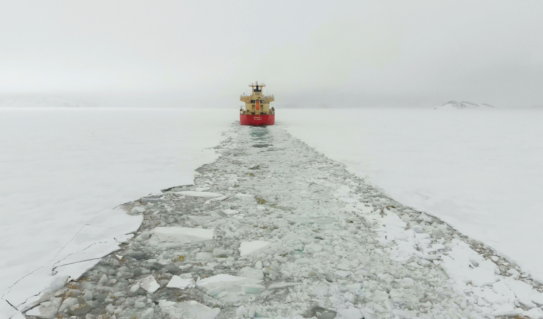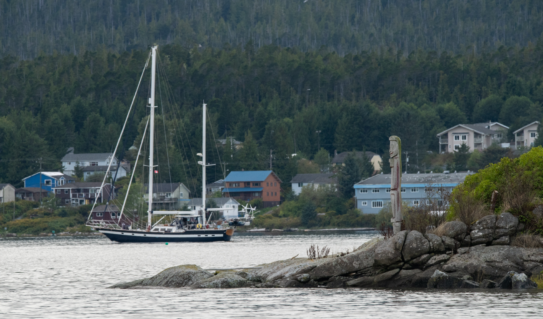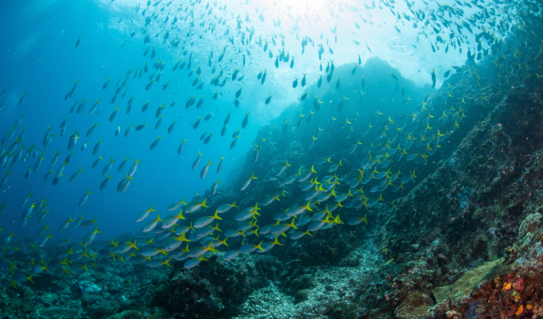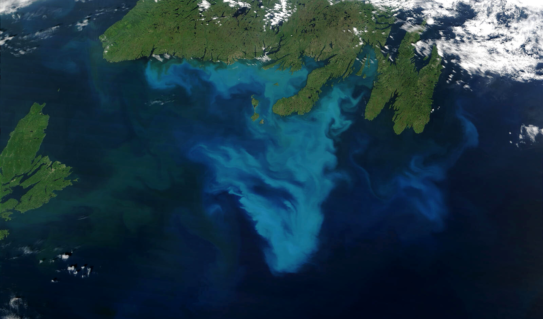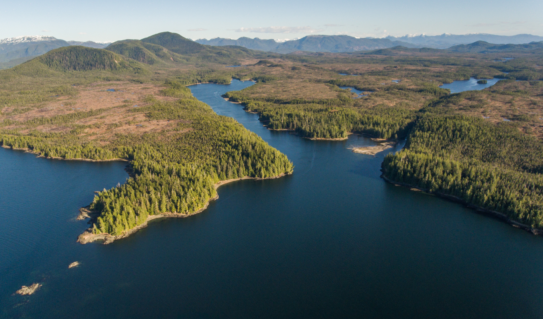Explore the ocean’s important (and often overlooked) role in protecting our planet.
The atmosphere and ocean work together, as separate but interconnected parts of the Earth’s climate system. Because of this coupling – between ocean and atmosphere – what happens in our atmosphere affects the ocean, and equally, the ocean impacts our climate and weather.
The ocean has an enormous ability to absorb heat and buffer daily and seasonal temperature swings. It makes our planet habitable. Yet, the ocean does even more than act as a planetary heat pump – it protects our planet from the effects of climate change, and it does so in two important ways.
Where the atmosphere meets the ocean, exchanges take place: that of heat and of gases like carbon dioxide. Since the Industrial Revolution, when we began adding carbon dioxide and heat generated by greenhouse gas accumulation to the atmosphere, the ocean has moderated the effects of our emissions: it has taken up about one third of the excess carbon dioxide and over 90% of the excess heat.
Because the ocean is constantly absorbing excess heat, ocean ecosystems are changing, as species reach their acceptable temperature limits. To better understand the challenge to the ocean, we can think about how the human body works. When our body temperature goes up a degree or two, we begin to feel achy and unwell. Add another degree or two and our bodies struggle to function normally. The result of heating to ocean ecosystems is similar, and marine animals are reacting to the increasing heat.
On the east coast of Canada, right whales have traditionally spent summers feeding on tiny crustaceans called copepods in the Bay of Fundy. In 2011, researchers noticed the whales were no longer coming to the Bay, or when they came, leaving not long after their arrival. Temperatures in the Bay of Fundy were increasing, and copepods prefer cooler water. Since the whales’ food source began shifting northward into cooler waters, researchers eventually found the missing whales in the Gulf of Saint Lawrence, where they now go to feed.
“Changing ecosystems is a major research topic at Dalhousie University," says Ocean School scientist, Boris Worm, "and they are featured in Ocean School, where we follow the journey of the right whale as it adapts to a changing climate. ”
By absorbing heat, the ocean provides a moderating effect on our climate. In the same way weather systems move heat and gasses throughout the atmosphere, the ocean’s tremendous currents transfer heat (and carbon dioxide and other gases) across our blue planet. For example, the Gulf Stream transfers water and its heat away from the tropics and the Gulf of Mexico, along the eastern seaboard of the United States and eventually across the Atlantic Ocean to Europe. The Gulf Stream warms these regions, in large part determining their climate. By moving heat around the planet, the ocean moderates global temperatures: it keeps the planet’s temperature just right for life on Earth.
A critically important series of global currents that provides this moderating function are known as the ocean’s great “conveyor belt”. The ocean conveyor belt begins in the North Atlantic. Here, warm water from the Gulf Stream transfers its heat to the North. Once cooled at high latitudes, these water masses sink – up to several kilometers – towards the seafloor. Flowing in these currents, water often resurfaces hundreds of years later on the other side of the globe. These currents also transfer carbon dioxide away from the surface ocean and atmosphere.
Interestingly, gases like carbon dioxide and oxygen are often transferred from the atmosphere to the ocean through bubbles. When ocean waves crash, they entrain bubbles of air into the water. The molecules in the bubbles are dissolved into the ocean. Carbon dioxide and oxygen have for at least two billion years been exchanged between the atmosphere and ocean, in part by bubbles. But ocean life plays a critical role in this as well. Marine photosynthesizing organisms, like phytoplankton and kelp, take up carbon dioxide and emit oxygen into the water and atmosphere. In fact, much of the oxygen we breathe once originated in the ocean.
Although the ocean is a major line in the defense against climate change, it is not immune to the impacts. The ocean absorbs our emitted carbon dioxide at a rate that is too high to be consumed by ocean plants. So instead, the excess carbon dioxide reacts chemically with other molecules in the ocean water, ultimately making the water more acidic. The ocean’s protection comes at the cost of less favourable conditions for many forms of ocean life, such as corals, clams and oysters.
The ocean – by absorbing human-emitted carbon dioxide and excess heat – lessens changes to our climate. We know the impacts to marine ecosystems: they are responding to the changes and adapting where possible. Boris Worm says it is time for us to help the ocean adapt, as it has helped all organisms on earth, for billions of years: “Our conservation actions need to adapt as well."




